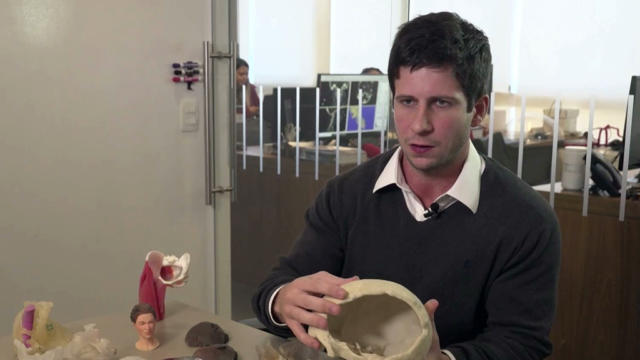The Fourth Industrial Revolution is a common topic at the 10th BRICS Summit in Johannesburg. It’s the idea that the boundaries between the physical world – and the cyber world – are blurring.
As CGTN’s Paulo Cabral reports, healthcare is a prime example.
Printing body parts is not just for science fiction. It’s done by Brazilian company BioArchitects, founded four years ago by young entrepreneur Felipe Marques. Just out of college with a degree in economics, he saw potential in investing in medical 3D printing.
“The 4th Industrial Revolution arises from the combination of many different technologies, and I believe 3D printing is one of them,” according to Marques. “It will change everything, from how you perform surgery – which is our case here – to any other product you purchase.”
With computer modeling based on CAT scan imagery, BioArchitects prints exact 3D models of a patients’ organ. This lets doctors see and manipulate a replica of what they’ll find when they operate.
Heart surgeon Moise Dalva has been using models of his patients’ hearts to decide on procedures – like choosing the exact location of an incision, or the best way to access the organ – before the actual operation.
“People don’t a have a zipper on their chests that you can just open and close,” he said. “You have to get it right the first time, in a safe and definite way. So having the possibility of observing all anatomical structures, and of actually practicing the surgery beforehand, enormously increases patient safety.”
The models can also be used for educational purposes. One allows doctors to train injecting Botox. Everything done to the physical model is reflected on a screen, virtually representing what would happen in real life.
BioArchitects also makes prosthetics, like a titanium plate that was the first of its kind to be approved for use by the U.S. Food and Drug Administration.
“The 3D printing has a huge potential to develop the market of customized products of all kinds,” Marques explained. “So I am sure that as the technology develops and 3D printing becomes cheaper and quicker, this will become a mass market.”
For now, however, the custom-made prosthetics are costly, and not covered by health insurers. The technology is here, but widening patient and doctor access remains a challenge.
 CGTN America
CGTN America

